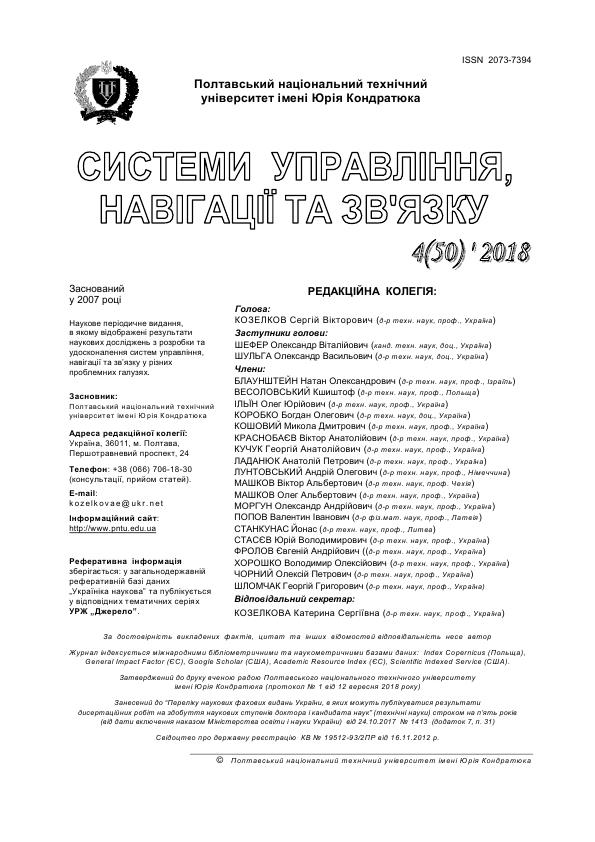DETERMINING THE DISTANCE TO THE OBJECT AND ITS GEOMETRIC PARAMETERS FOR NAVIGATING THE ROBOT
DOI:
https://doi.org/10.26906/SUNZ.2018.4.003Keywords:
technical vision system, mobile robot, laser range finder, obstruction, navigationAbstract
The subject of the study in this article is the process of determining the distance to the obstacle and its geometric dimensions necessary to select the optimal route for the mobile robot, which allows to bypass the obstacle in an automatic mode. The purpose is to develop a procedure and implement it algorithm for determining the distance to the obstacle and its geometric dimensions based on the use of a single source of laser radiation. The problem: based on the analysis of known approaches to determining the distance to the obstacle and determining its geometric dimensions, develop a procedure and an algorithm that realizes it, allowing to determine the distance to the obstacle and its geometric dimensions, using a single laser source. The approaches used are: determining the distance to the obstacle with the help of laser range finders; Determination of geometric dimensions and forms of obstacles based on the use of technical vision systems; Determination of the distance to the obstacle using the triangulation method. The results are obtained: an approach is proposed that allows using only one laser source and a web camera to determine the distance to the obstacle and its geometric dimensions. Unlike well-known, methods based on the application of technical vision systems do not use a "beacon" (an object with known known dimensions) and a stereo vision system. Conclusions: The approach proposed in the work allows us to determine the distance to the obstacle with an accuracy of 97.4%, geometric dimensions with an accuracy of 91%. The procedure considered and the algorithm that implements it can be used later in navigation systems for mobile robots.Downloads
References
Сорокин М.И. Лазерный дальномер и 2d сканирование помещения. Научно-практический электронный журнал «Аллея Науки». 2017. № 9. URL: http://alley-science.ru/domains_data/files/Journal_May2017/
Joe Minichino, Joseph Howse. Learning OpenCV 3 Computer Vision with Python. 2015. ISBN 13 9781785283840.
Sergiyenko O. Dynamic Laser Scanning method for Mobile Robot Navigation / O. Sergiyenko, V. Tyrsa, L. Devia, W. Hernandez, O. Starostenko, M. Rivas // Proceedings of ICCAS-SICE 2009, Fukuoka, Japan, 2009. – P. 4884–4889.
Lucas B.D., Kanade T. An iterative image registration technique with an application to stereo vision. Proc. of Imaging Understanding Workshop, 1981, pp. 121–130.
Библиотека OpenCV. URL: https://opencv.org/
Python Tutorial. URL: https://www.tutorialspoint.com/python/
OpenCV на python: наложение текста и графики URL: http://robotclass.ru/tutorials/opencv-video-text-drawings/




